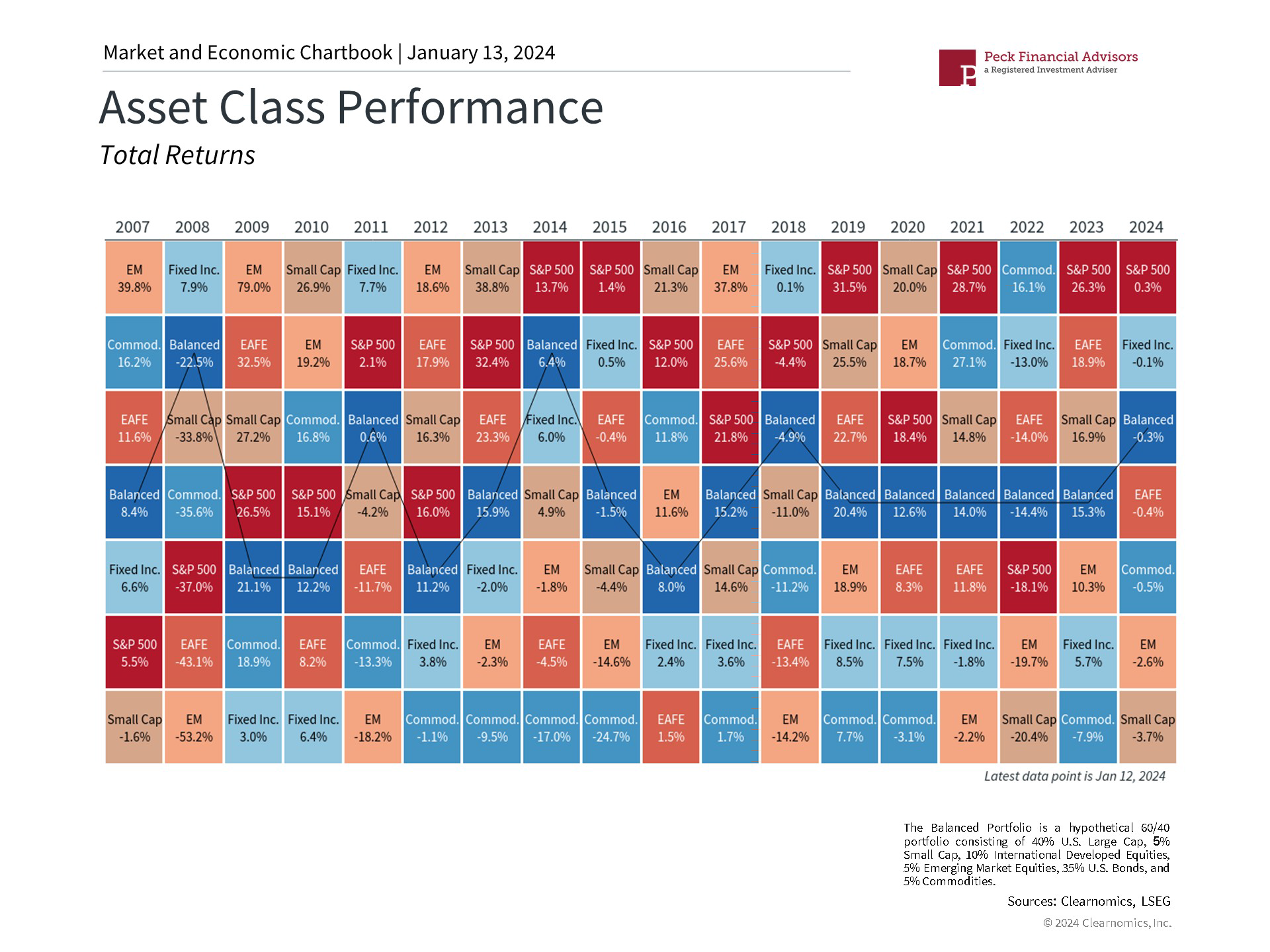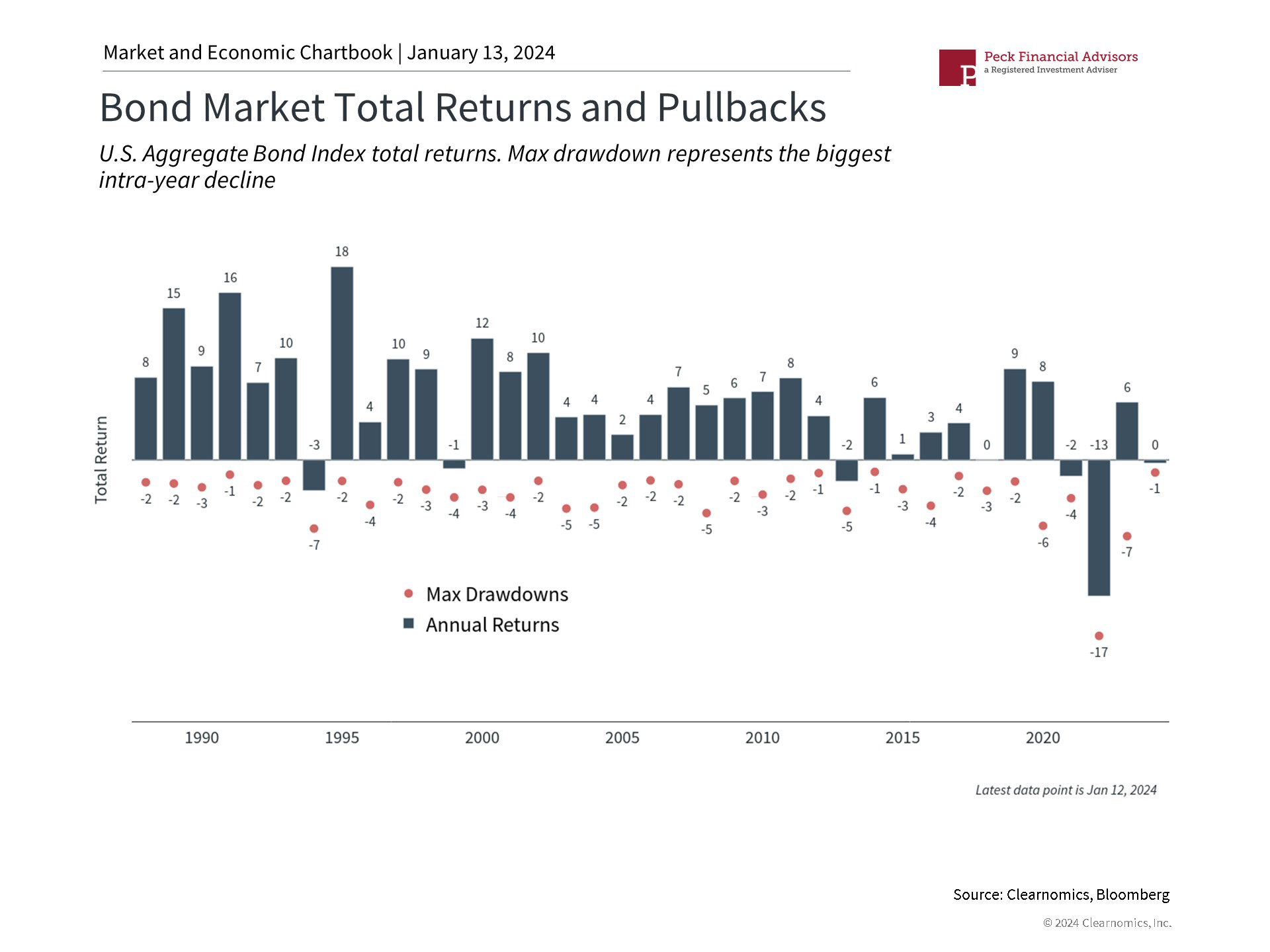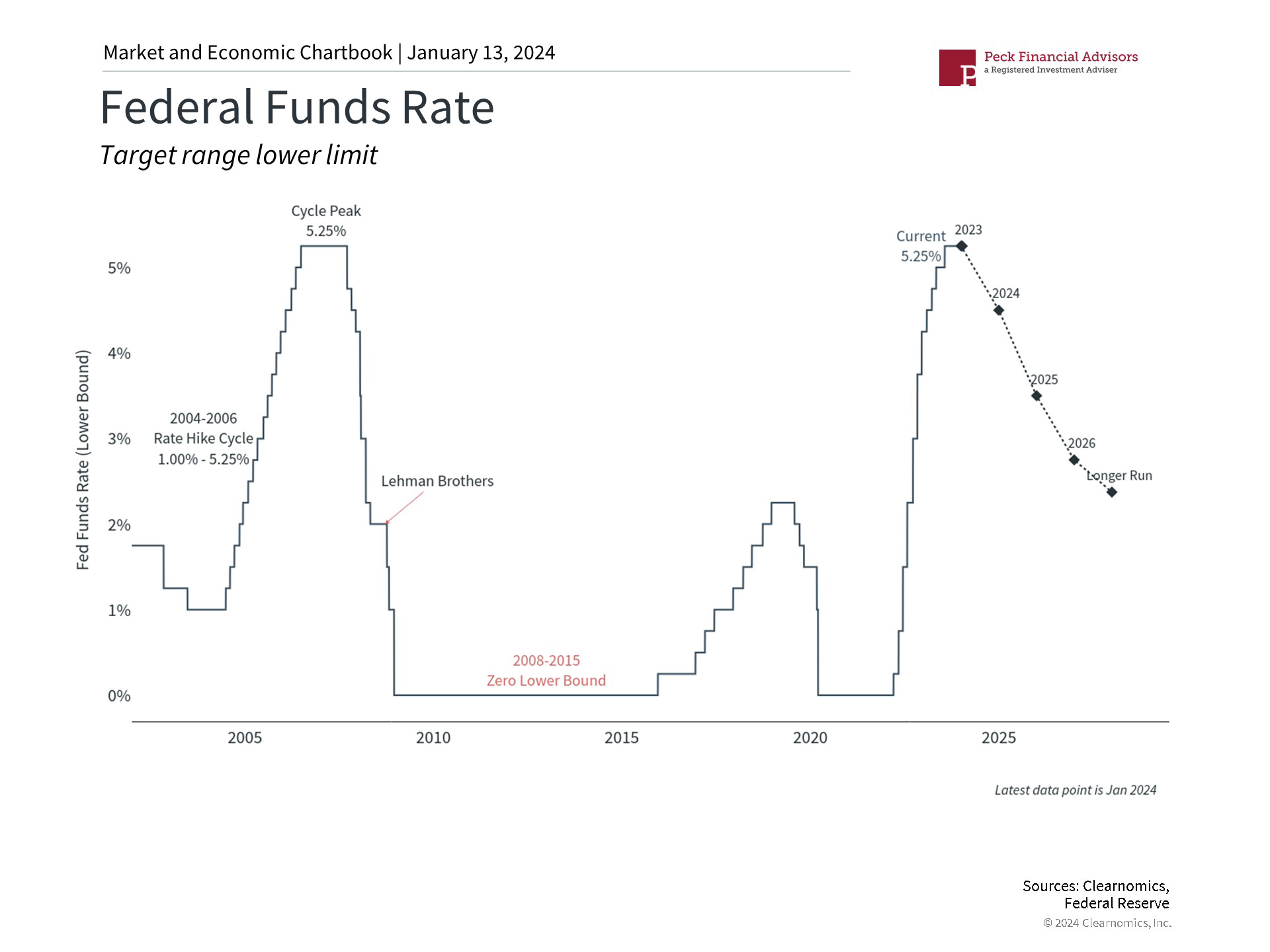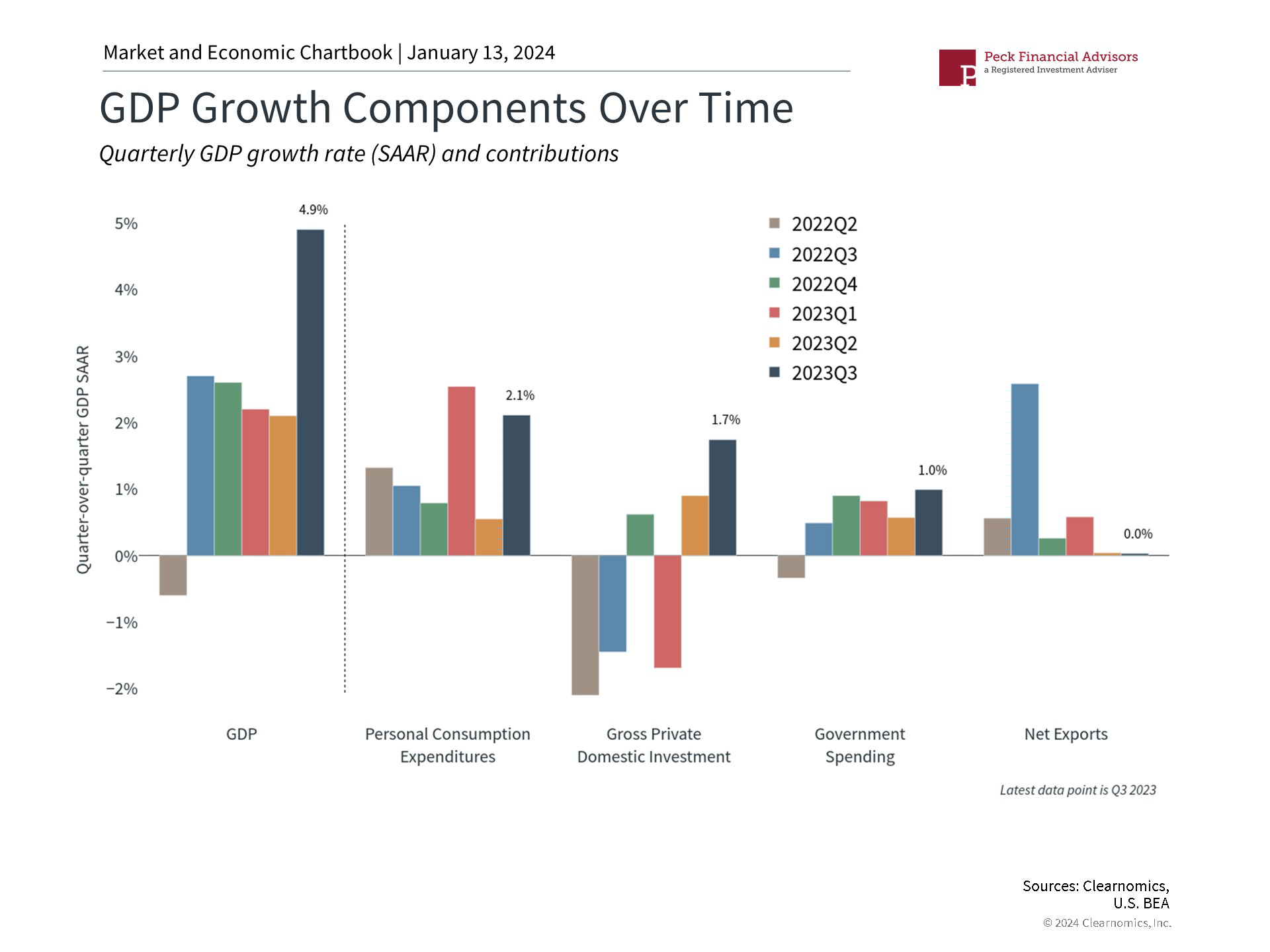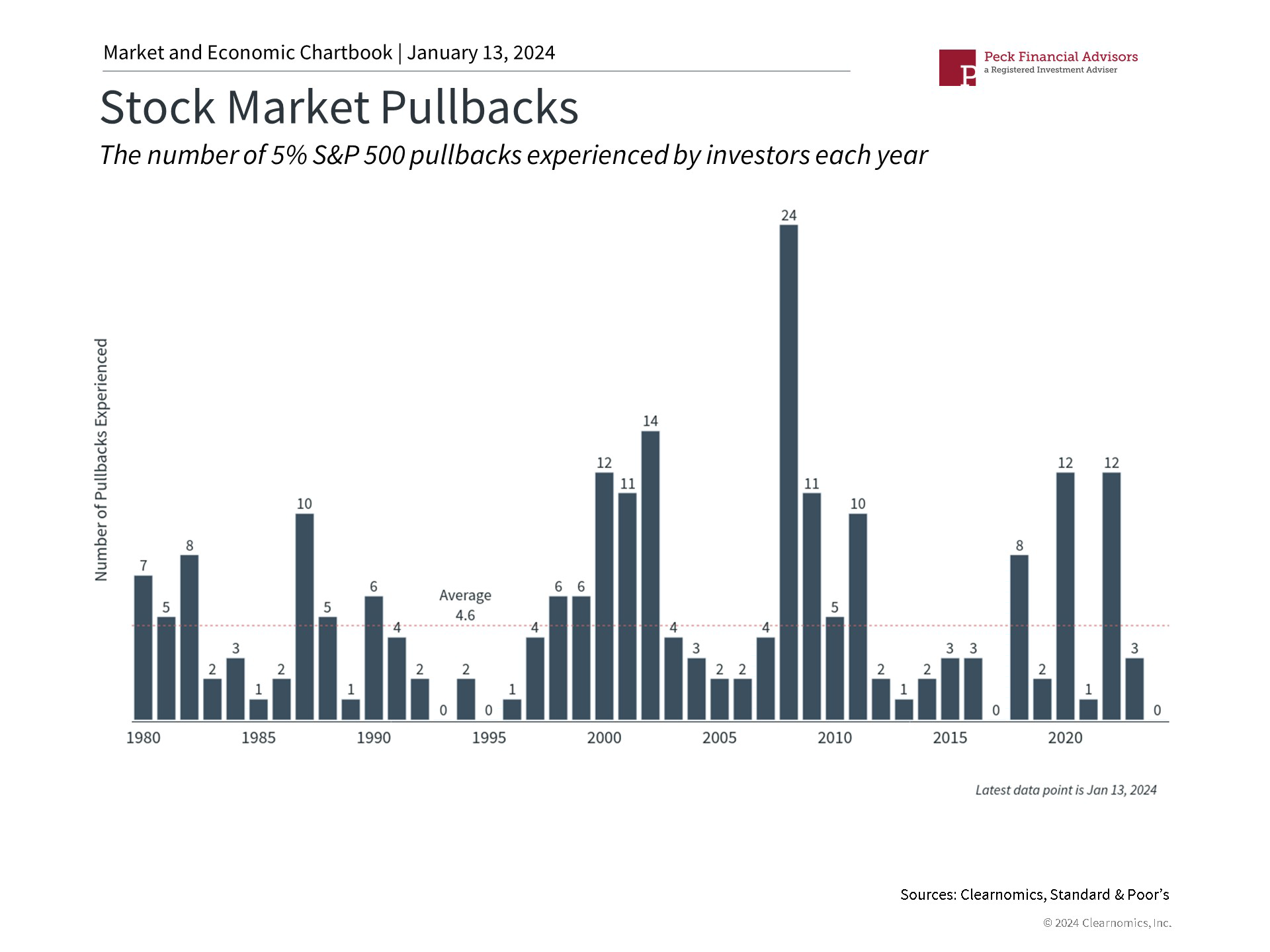5 Insights to Understand Markets in 2024
Article by James Liu, CFA. Founder and Head of Research Clearnomics.
The past year has shown us that it's important to stay invested and diversified across all phases of the market cycle, rather than try to predict exactly what might happen on a daily, weekly, or monthly basis. Below are five key insights into the current market environment that will likely be important in 2024.
1. Many asset classes performed exceptionally well in 2023
Strong economic growth and falling rates propelled many asset classes higher last year. Stocks reversed much of their losses from the previous year with a historically strong gain and bonds bounced back as interest rates fell in the final months of the year. Technology stocks, especially those related to artificial intelligence, helped to drive market returns as well, pushing the Nasdaq to a nearly 45% return. While the so-called "Magnificent 7" did double in value, other sectors also began to perform better as market conditions improved.
Most importantly, there are signs that earnings growth is recovering. Earnings-per-share for the S&P 500 are expected to have been flat in 2023, but Wall Street consensus estimates suggest that they could grow by double digits each of the next two years. While this will depend on the path of economic growth, any increase in earnings will help to improve valuations and support the stock market.
2. Bonds have rebounded as interest rates have stabilized
Bonds had a much better year with interest rates rising through October then falling on positive inflation data. While bonds have not recovered their 2022 losses after a historic spike in inflation, recent performance shows that bonds are still an important asset classes that can help to balance stocks in diversified portfolios. This is true across many sectors including high yield, investment grade, government bonds, and more.
3. The Fed is expected to cut rates in 2024
Improving inflation coupled with a historically strong job market have helped the Fed to achieve its policy objectives. While it's too early to declare victory, many expect the Fed to begin cutting rates in 2024. The Fed's own projections suggest they could lower rates by 75 basis points by the end of the year. Market-based expectations are much more aggressive and are expecting twice as many cuts. While it's hard to predict exactly what the Fed may do this year, the fact that rates could begin to fall could help to support financial markets and the economy.
4. The economy has been remarkably strong
The economy has been stronger than many expected over the past twelve months. GDP grew by 4.9% in the third quarter, one of the fastest rates in recent years. Consumer spending helped as did a rebound in business investment as the interest rate outlook stabilized. Unemployment is still only 3.7% and while monthly job gains have slowed somewhat, the labor market is still far stronger than economic theory would have predicted given the sharp increase in interest rates.
5. The most important lesson for investors is to stay invested
While the past twelve months have been positive for investment portfolios, investors should not become complacent. Volatility in the stock market is both normal and expected with even the best years experiencing short-term swings, as shown in the accompanying chart. Rather than trying to predict exactly when these pullbacks will occur, it's more important for investors to hold diversified portfolios that can withstand unforeseen events. The past few years are a reminder that holding an appropriate portfolio is the best way for investors to achieve their long-term financial goals.


